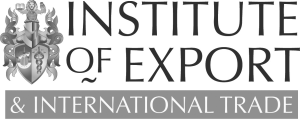If you are a manufacturer of medical devices, machinery, children’s toys, you’ll be familiar with the UKCA and CE mark. Recently the UK Government announced that Great Britain would use the CE mark in perpetuity now, so UKCA and dual marking are no longer a requirement. However, we digress!
Focussing on the CE mark for a moment, this is essentially a standard that demonstrates a product complies with EU (and again GB) safety, health or environmental requirements. It is an essential requirement to place certain products on the GB, EU and Northern Ireland marketplace.
However, EU directives that govern the need for CE marking are vertical in nature and this has resulted in many products slipping through the net. Additionally, consumer buying habits and cross border trade in goods has increased significantly since the EU’s original product safety directive (Directive 2001/95/EC) was drafted. These shifts, together with regulatory divergence among Member States has led the Commission to replacing the existing directive with new regulation – the EU General Product Safety Regulation (GPSR).
With very few product exceptions (medicinal products, pesticides, food and feed products, and a couple more), this regulation stands to impact many manufacturers, importers, and distributors involved in placing consumer goods on the EU marketplace. Furthermore, this regulation introduces obligations on the part of online marketplaces shipping consumer goods to the EU, importantly both CE marked goods and non-CE marked goods.
The increased prevalence of platforms like eBay, combined with a desire to extend the life cycle of products, this regulation has also been drafted to include within its scope used or second-hand products, and products that are repaired, reconditioned, or recycled. Trade or professional targeted goods are also included where they can be reasonably expected to migrate to consumer use; something that happens more frequently these days.
Obligations and compliance requirements differ slightly depending on what role you play in the product’s supply chain i.e. manufacturer, importer, distributor, online marketplace, with the overwhelming burden being on manufacturers. However, the regulation also introduces the notion of ‘economic operator’, a catch all phrase, meaning that the regulation applies to any natural or legal person involved in placing the goods on the EU marketplace even when they do not fit into the categories mentioned in the legislation. Importantly, companies re branding finished goods or modifying goods to any extent, are automatically deemed to be the manufacturer and as such must meet the requirements that role dictates.
GPSR comes into force on 13th December and whilst there is much to do to prepare, not least of which being the need to appoint an Authorised Representative (or Responsible Person) in the EU market if not in place already; overall the regulation is straight forward in its ambition. Essentially it aims to ensure that more products have to meet stringent safety standards for the benefit of consumers, and to guarantee that when something goes wrong, the recall or withdrawal process is comprehensive and efficient with each player fully appraised of their role and responsibilities.
So, what can you do to adequately prepare? How can you ensure your goods are not stopped at customs and subjected to market surveillance scrutiny?
Global Trade Department can help you quickly:
- determine if you are impacted i.e. whether your products fall within the regulatory scope; and
- understand your compliance obligations based on the role you play in the supply of product: and finally
- understand what product, process, or documentation changes you must make before 13th December
Simply book a Global Trade Clinic session with us for a date/time that works for you. These sessions are free, impartial, and confidential.






















